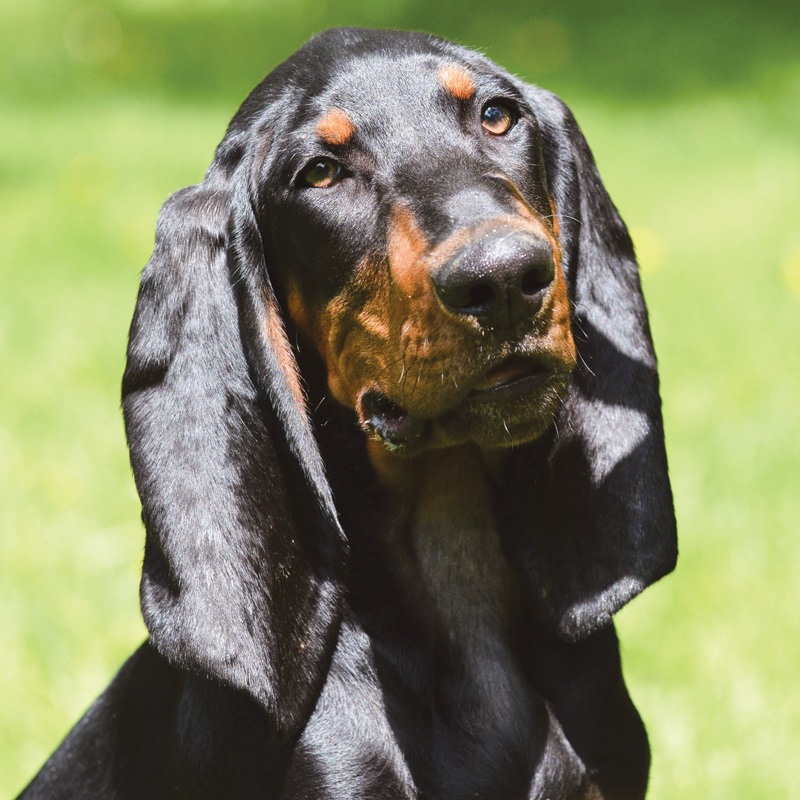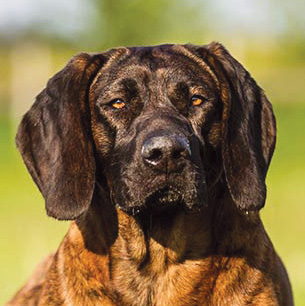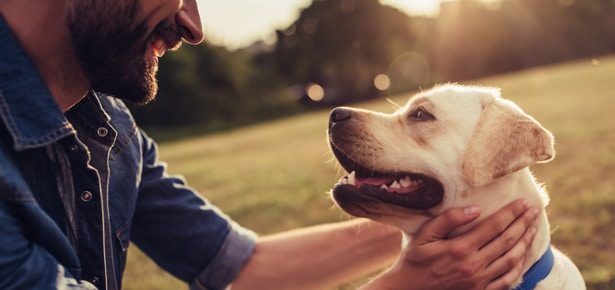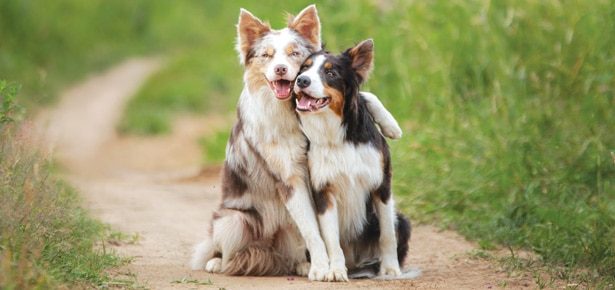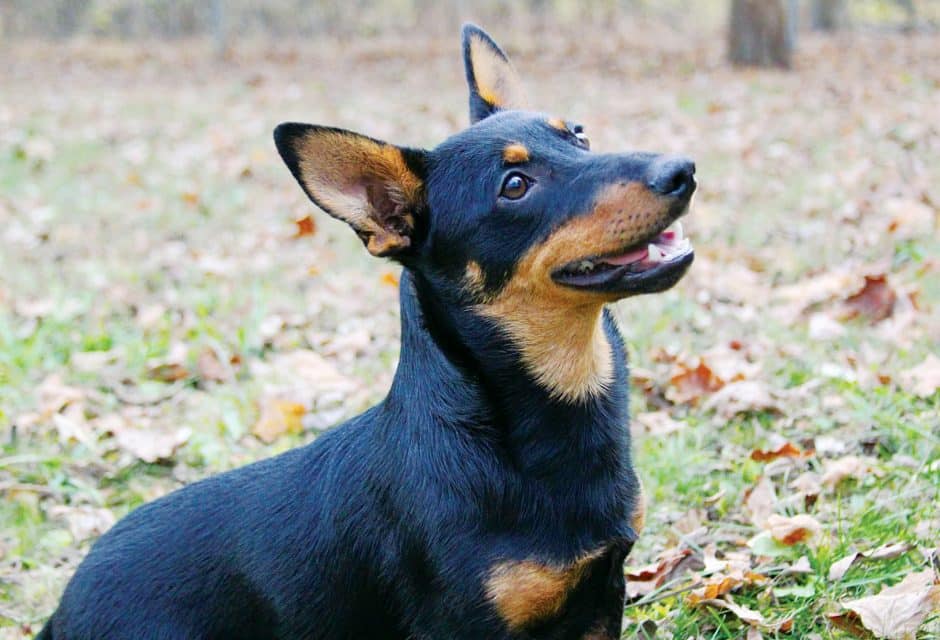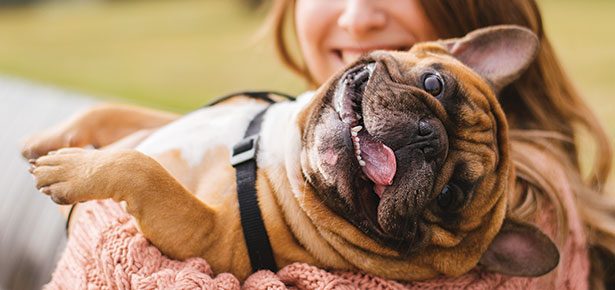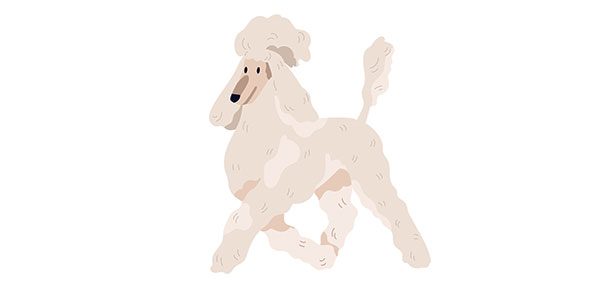

The Bloodhound
World-class sweetheart and scent-tracker extraordinaire: the Bloodhound right for you? Read on to find out!

There’s no mistaking the Bloodhound. That trademark long face, those soul-piercing eyes, and the endless wrinkles and folds of his skin! This is a truly substantial dog who strikes a unique and dignified pose. He’s the most renowned scent-tracker in the world. What’s his story?
Bloodhound History & Origin
The Bloodhound is more popular in America than anywhere else in the world, both in “real life” as well as in books and movies, but he actually originated in medieval Europe.
In the 7th century, French monk and passionate hunter Francoise Hubert dedicated his life to breeding hunting dogs capable of tracking even the coldest of scent trails—dogs who could find their quarry when all others had given up. Over the years, a variety of dogs were introduced into the breeding lines, many of which had been brought back from far-away travels by Crusaders.

Photo: eriklam/Bigstock
What Bloodhounds Were Bred For
On hunts during the medieval period, Bloodhounds were kept on leash. Their role was to follow the scent of large prey—typically a boar or deer. Once they caught the scent, pack hounds would complete the chase. The Bloodhound remained leashed and was not part of the kill, though legend has it he was always given a special reward from the carcass of the animal. His critical but limited role in hunting undoubtedly explains, at least partly, his gentle nature. A world-class hunter he is; a killer he is not.
For many centuries, the Bloodhound flourished in France and England. Almost exclusively owned by royals and members of the nobility, Bloodhounds were cherished by the likes of William the Conqueror and Elizabeth I.
As was the case with so many breeds, the French Revolution had a devastating impact on the Bloodhound population. Members of the aristocracy left their homes and fled for their lives; dogs were often casualties amid the chaos. The once-great hunts were no more and the Bloodhound’s numbers in France dwindled nearly to the point of extinction.
The breed was still prized in England, however, and the Bloodhound continued to be used for hunting there. In fact, by the 16th century, the Bloodhound had also become recognized for playing a valuable role in law enforcement, tracking down fugitives.
Bloodhound Characteristics At-a-Glance:
✔️ Friendly and patient
✔️ Good with kids and fellow mammals
✔️ Craves companionship
✔️ Smart but notoriously stubborn
✔️ Energetic and athletic
✔️ Large-sized
In the Victorian era, the breed flourished. With the advent of the dog show came a whole new reason for people to take interest in the breed. Queen Victoria was a fan and first entered one of her Bloodhounds in a dog show in 1869. At the same time, the role of the dog was shifting. Dogs weren’t strictly working animals or companions for wealthy elites. They were becoming loving companions for everyday folks.
“Neat-freaks will have to contend with the realities of dog drool, because the Bloodhound is an accomplished slobber-slinger.”
The Bloodhound Comes to America
It wasn’t long before the Bloodhound made his way to America. The Bloodhound was recognized by the American Kennel Club (AKC) in 1886 and was first entered at the Westminster Kennel Club Dog Show in 1888. Fanciers took an immediate interest, and many dedicated considerable time and interest into furthering the breed’s type and temperament. The American Bloodhound Club was founded in 1952.
Back in the UK, fox hunting had gained popularity, and the Bloodhound’s numbers declined as a result. (With greater ease in finding the fox and a faster style of hunt, the Bloodhound was used less frequently.) Later on, the Second World War had a devastating impact on England’s dogs and the Bloodhound was no exception. Fortunately, after the War, some of the finest Bloodhounds from America were exported back to their original homeland as part of an effort to introduce healthy breeding stock and revitalize the Bloodhound population there.

Photo: Catherine Smith Photography/Bigstock
Bloodhound Size & Appearance
Today’s Bloodhound is a large dog. The AKC accepts the breed at heights ranging from 23 to 25 inches and 25 to 27 inches, with greater height preferred. Weights range from 80 to 100 pounds for females; 90 to 110 pounds for males—and a well-proportioned dog is desired. The AKC accepts coat colours in black and tan, liver and tan, and red. A small amount of white is accepted on the chest, feet, and tip of the tail.
The Bloodhound Nose
On the matter of scenting ability, the Bloodhound has no equal. His sense of smell is so keen that he’s able to pick up even the coldest of scents over great distances and many days. This coupled with great power and stamina, plus a “never give up” mindset make him quite literally the ideal tracker. For these reasons, the Bloodhound is used today around the world by law enforcement agencies in their pursuit of criminals, missing people, and objects they are trained to detect.
Is the Bloodhound Right For You?
The Bloodhound is a beautiful dog, but he’s not the right choice for everyone. For starters, he’s very large and, while he’s easygoing and patient with kids, one swat of his tail could easily knock a toddler down. He’s not suited for apartment living. This dog needs room to roam.
Neat-freaks will have to contend with the realities of dog drool, because the Bloodhound is an accomplished slobber-slinger. The name of the game is to have rags and wipes strategically placed throughout your home for use as needed. It’s very manageable, but if you want a pristine house, it’s something to consider, because there is no such thing as a slobber-free Bloodhound.
………..
Most Popular Dogs in the US
According to the most recent AKC registration statistics
[1] Labrador Retriever
[2] German Shepherd
[3] Golden Retriever
[4] French Bulldog
[5] Bulldog
[6] Poodle
[7] Beagle
[8] Rottweiler
[9] German Shorthaired Pointer
[10] Pembroke Welsh Corgi
[51] The Bloodhound
………..
Does the Bloodhound Smell “Doggy?” Well….
As for his odour, like many of his scent-hound cousins he’s got a rather oily, earthy, musty scent that comes and goes with weather and exercise and such. Most breed fanciers would say it’s just a trade-off for that unique and glorious coat and you get used to it.
The Bloodhound at Home
Those in search of a dog that offers home protection are barking up the wrong tree with this breed. He doesn’t have a fierce bone in his body. In fact, like most hounds, he is often aloof with strangers. When someone comes to the house, he may bark like crazy—or ignore them. Some Bloodhounds are very quiet to live with.
The Bloodhound is a pack animal who craves the company of others. He’s happiest in a home where there are other dogs or cats, and he is not suited for outdoor living. He bonds closely with his people and wants to be near them.
Bloodhound Training & Socialization
From the start, socialization and obedience training are important. Hounds are always going to give even the most advanced Obedience handler a run for their money, and the Bloodhound is no exception. In fact, some believe him to be the most stubborn of the whole group!
Starting at the puppy stage, train, train, train. Of course, only use positive reinforcement methods. You cannot be harsh with this gentle soul (or any other dog), though you must be firm with him. To be sure, getting the Bloodhound to a well-mannered, well-trained state requires a commitment. If you don’t have the time, resources, or patience to invest in months of training, find another breed. He deserves a guardian who will take the time needed so he becomes the best dog he can be.
Profile: The Bloodhound
Size: Large
Strong and well-proportioned, heights range from 23 to 27 inches and weights from 80 to 110 pounds.
Activity Level: 4/5
Above average. This active breed could get by with one long walk a day, but he’d prefer more. His strong instinct to work makes him a great fit for canine sports, most notably tracking.
Grooming: 4/5
Weekly brushing will suffice but he does shed seasonally. Daily attention to cleaning his skin folds and learning to care for his ears is important.
Heritage:
The bloodhound was developed in medieval France to assist pack hunting of deer and boar. Today, his keen sense of smell is also used to assist law enforcement in search and rescue.
For more information on Bloodhound rescue in the U.S., visit bloodhounds.org. In Canada, visit canadianbloodhoundclub.com.
Bloodhound Energy Level
There is a popular misconception that Bloodhounds are lazy. Not so. This is an active dog who was bred to run for hours on end. He requires daily exercise. Very long walks daily are a minimum and, once he reaches adulthood, he could be an excellent running companion. He’ll be happiest in a home where he has a large yard to roam about. With his strong tracking instincts, a fenced-in yard (ideally six feet or higher) is an absolute must. So is remaining on-leash at all times when out.
Bloodhound Grooming, Health & Care
Grooming the Bloodhound requires time and attention. His coat is loose and hangs down with many folds. He needs to be brushed once a week using a hand mitt and a damp cloth to clean all of the folds in his skin.
As well, the Bloodhound’s ears are prone to infection and require ongoing care. Your veterinarian can show you how to gently clean his ears with a safe cleaning solution once a week. That aside, the Bloodhound is a generally healthy dog, but like all purebreds, he may be prone to some genetic conditions.
The Bloodhound in Summary
If the Bloodhound were a work of art—and, let’s face it, they really are—they’d be what we might call a study in contradictions. They’re immense, powerful, and hardworking, but also calm and sensitive, a sweet soul who craves both human and animal companionship. You’d be hard-pressed to find a more tender-hearted companion, so if you can meet their needs, you’ll be rewarded with a lifetime of love and devotion.
If you like the Bloodhound, you might also consider these similar breed…
Black & Tan Coonhound Bavarian Mountain Scent Hound Hanoverian Scenthound
Photos © AKC
» Read Your Breed For more breed profiles, go to moderndogmagazine.com/breeds
Join the newsletter and never miss out on dog content again!
"*" indicates required fields
By clicking the arrow, you agree to our web Terms of Use and Privacy & Cookie Policy. Easy unsubscribe links are provided in every email.
